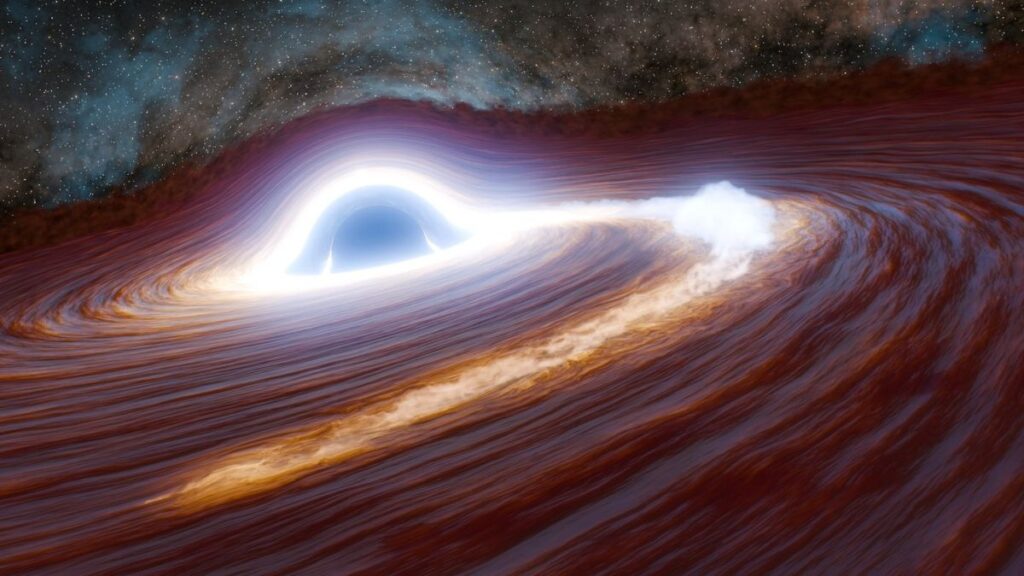
A team of astronomers has identified the most powerful and distant energy flare ever recorded from a black hole. This extraordinary event, which occurred approximately 10 billion years ago, reached a peak brightness equivalent to that of an astonishing 10 trillion Suns. The research, led by astrophysicist Matthew Graham from Caltech, suggests that the flare was caused by a supermassive black hole, estimated to be 500 million times the mass of the Sun, consuming a star that ventured too close to its gravitational pull.
This phenomenon, known as a tidal disruption event (TDE), was first detected in 2018 when the black hole, designated J2245+3743, dramatically brightened by a factor of 40 over several months. The peak brightness of the flare surpassed the previous record for active galactic nucleus (AGN) flares, known informally as “Scary Barbie,” by a factor of 30. Although J2245+3743 has been gradually fading since reaching its peak, it remains significantly brighter than its original state.
By March 2025, the total energy released during this event was estimated to be around 10^54 erg, which is equivalent to the energy produced by transforming the entire mass of the Sun into electromagnetic radiation. Various cosmic phenomena can cause similar bursts of light, including gamma-ray bursts from supernova explosions and gamma-ray emissions from AGNs. However, the light profile of J2245+3743 aligns most closely with that of a TDE, specifically a case where a star roughly 30 times the mass of the Sun came perilously close to the black hole and was torn apart by its intense tidal forces.
Understanding the Cosmic Event
The black hole’s feeding process has continued since the star’s destruction, with J2245+3743 remaining two magnitudes brighter than it was before the flare. Researchers believe that the black hole will eventually return to its original brightness once it has consumed all remnants of the disintegrated star. Notably, although the event seems prolonged from our viewpoint, it likely occurred over a much shorter duration.
The phenomenon of time dilation, a result of the expansion of the Universe, affects our perception of the event’s timeline. As Matthew Graham explains, “Seven years here is two years there. We are watching the event play back at quarter speed.” This distortion necessitates careful consideration when modeling the dynamics of TDEs, as it influences the understanding of how these cosmic events unfold.
Future Implications
This discovery not only sheds light on the behavior of supermassive black holes but also aids scientists in identifying similar events that may have been misclassified in existing astronomical databases. By revisiting and observing these records, researchers hope to uncover additional TDEs that could provide further insights into the nature of black holes and their interactions with surrounding stellar bodies.
The findings from this research have been published in the journal Nature Astronomy, contributing significantly to our understanding of cosmic phenomena and the immense power of black holes. The implications of this research extend beyond a single event, opening new avenues for exploration in the ever-expanding field of astrophysics.






